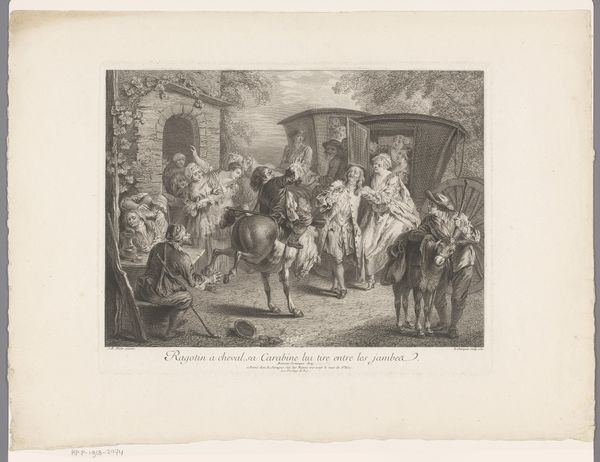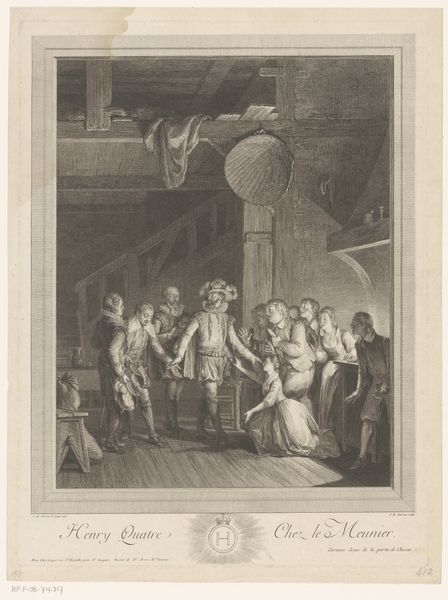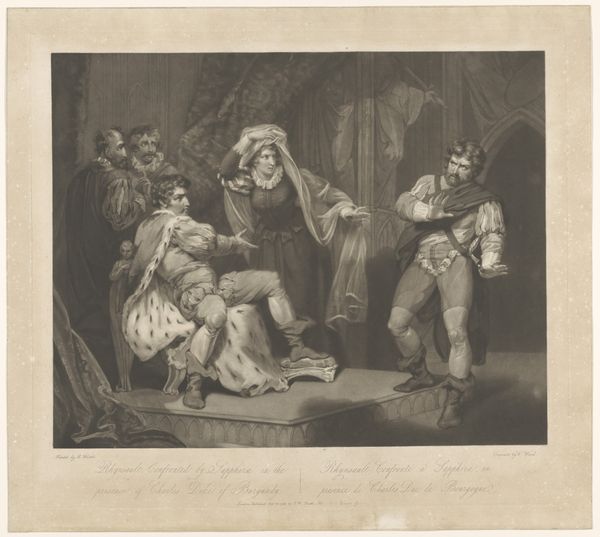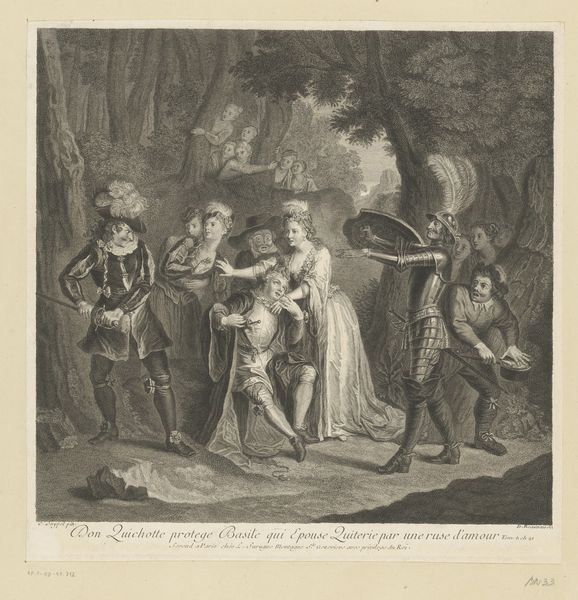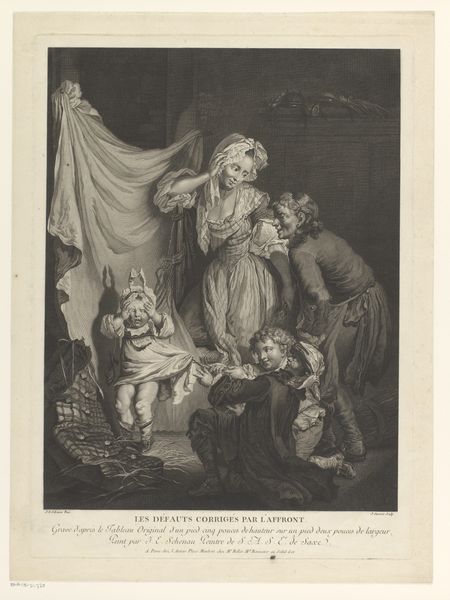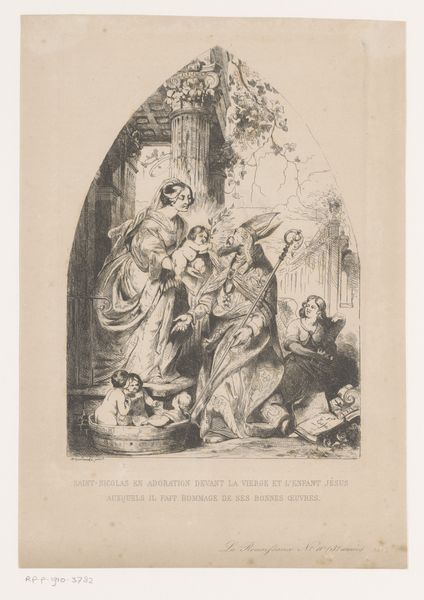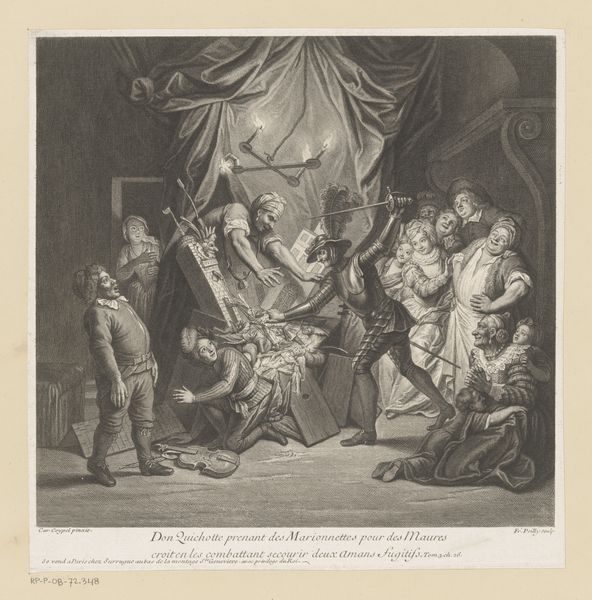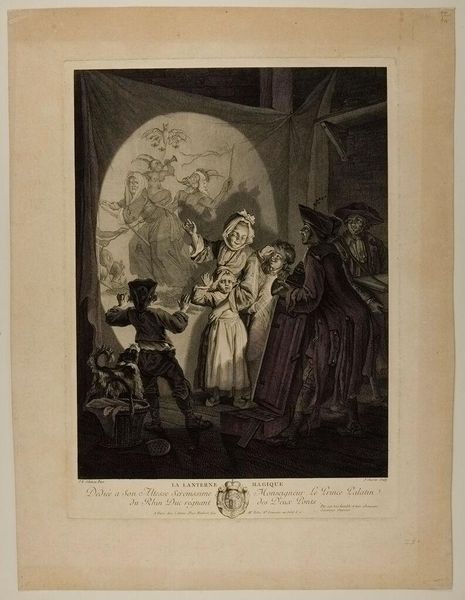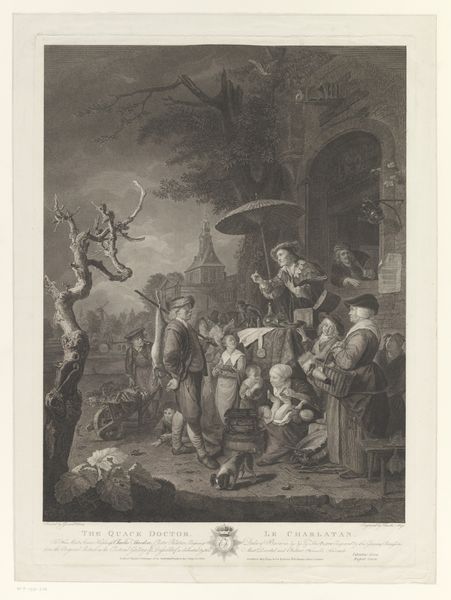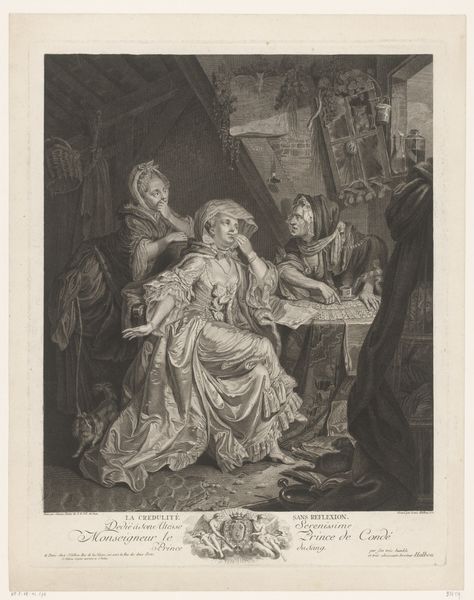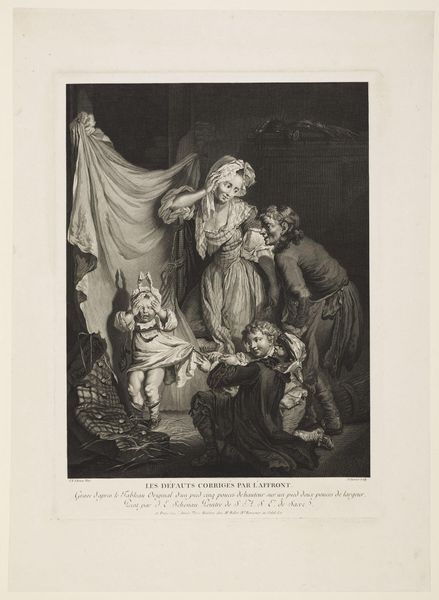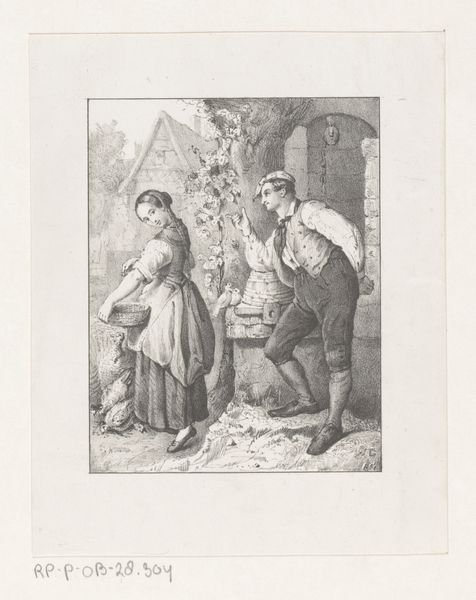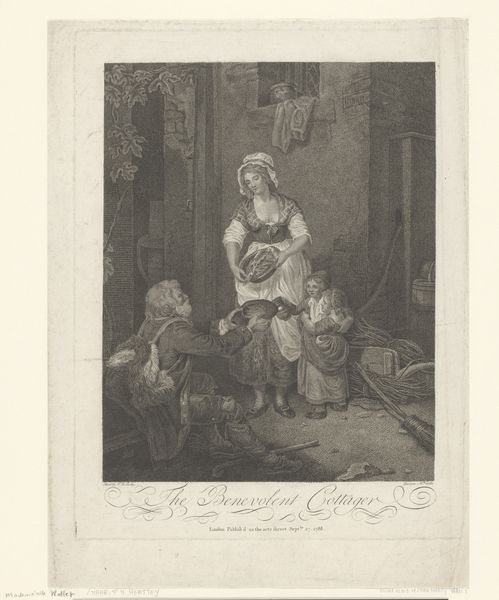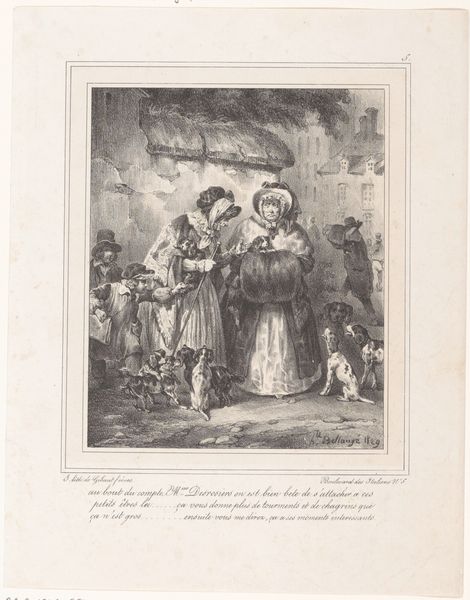
etching, engraving
#
narrative-art
#
etching
#
caricature
#
old engraving style
#
19th century
#
genre-painting
#
engraving
#
rococo
Dimensions: height 484 mm, width 350 mm
Copyright: Rijks Museum: Open Domain
Curator: Here we have “Woman and Frightened Children by Magic Lantern,” an etching and engraving by Jean Ouvrier, dating to around 1765-1767. What’s grabbing you first, looking at this, as a whole? Editor: It's the drama of the light, isn't it? That concentrated circle, bleaching everything within its boundary almost to nothing. There's a stage-like quality, and everyone is playing their part. Like looking at a ghost story on a summer evening. Curator: Indeed, there’s a wonderful artificiality. It's all carefully orchestrated chaos. What about the lantern show itself? It seems to be quite a hit. Editor: That’s what I find so striking. These shadowy figures, witches perhaps, are performing for a rapt audience. Fear and fascination combined; the images are both a spectacle and something genuinely disturbing. It reminds us of how easily swayed we are by what we see projected before us. There is this cultural meme around archetypes. When do witches and spells stop existing? When is magic debunked by science? And when do we willingly subscribe again to these tropes to produce a sensation or a story that seems more significant? Curator: A neat point. It speaks, perhaps, to the blurring lines between entertainment and belief. Even back then, the power of images to shape our perception was potent. What do you make of the Rococo stylistic flourishes? The whole composition seems caught between realism and playful artifice. Editor: Exactly. It captures that very particular moment when entertainment starts questioning itself. The artist, or rather the showman in this case, becomes acutely aware of the audience's gaze, their expectations. It's a metacommentary cleverly packaged as simple fun. Curator: It’s funny you should mention it that way, because thinking back, Ouvrier, I’m realizing now, does such a good job depicting a range of responses—laughter, shock, pure wonderment. Do you see other narrative or symbolic cues, considering the work’s overall theme? Editor: I notice the contrasting outfits—those refined characters observing from a distance. The magic lantern show almost certainly had some significance within 18th-century aristocratic society, reflecting deeper currents within culture, ritual, and perhaps hidden subversions of meaning. Curator: Food for thought, definitely. It always amazes me how much narrative can be packed into what initially appears to be a simple genre scene. It prompts a kind of reflective questioning of what performance does to us. Editor: I agree completely; that blend of observation, questioning, and good old visual drama is why I find myself constantly drawn to work like this. It’s like a puzzle that you never quite solve, and it continues to trigger new insight.
Comments
No comments
Be the first to comment and join the conversation on the ultimate creative platform.
